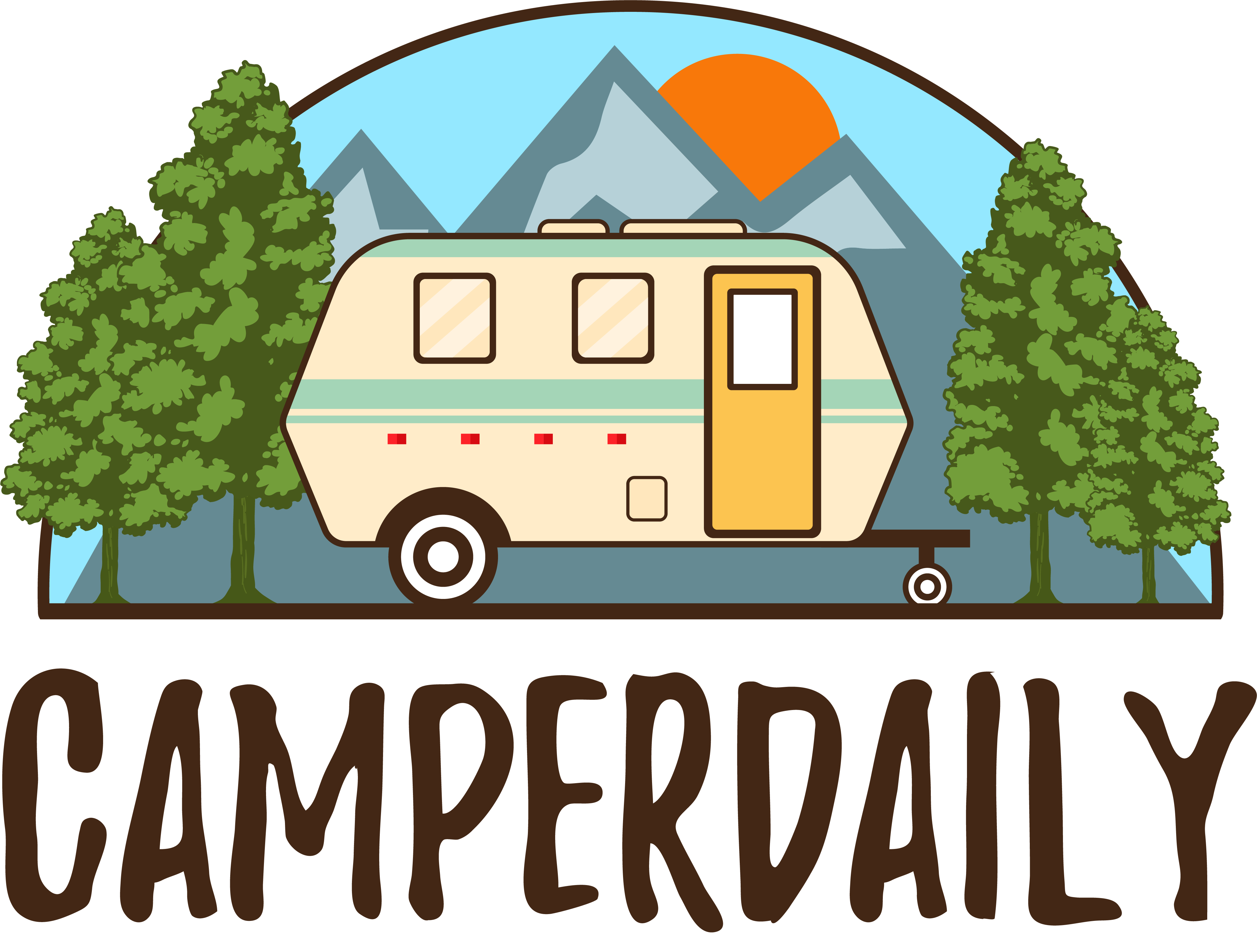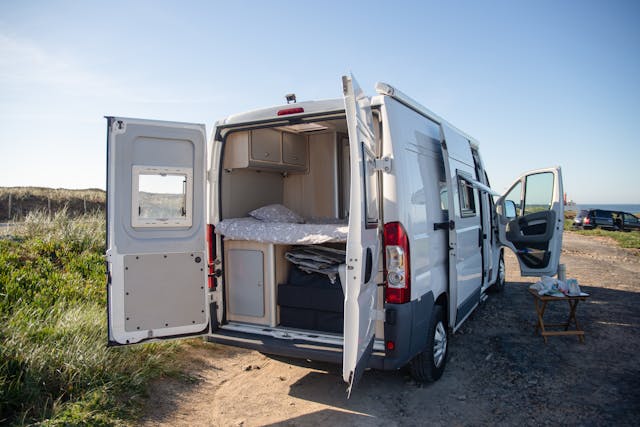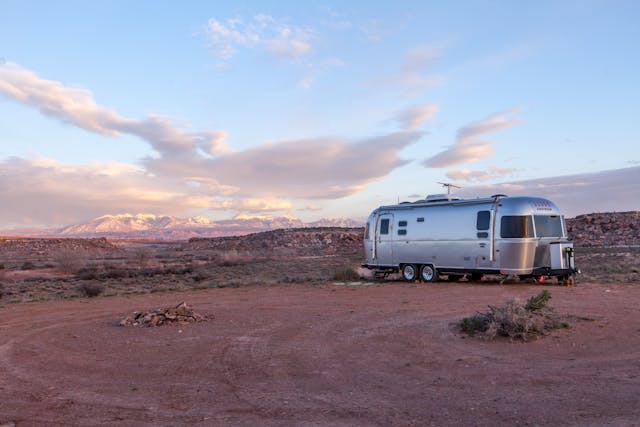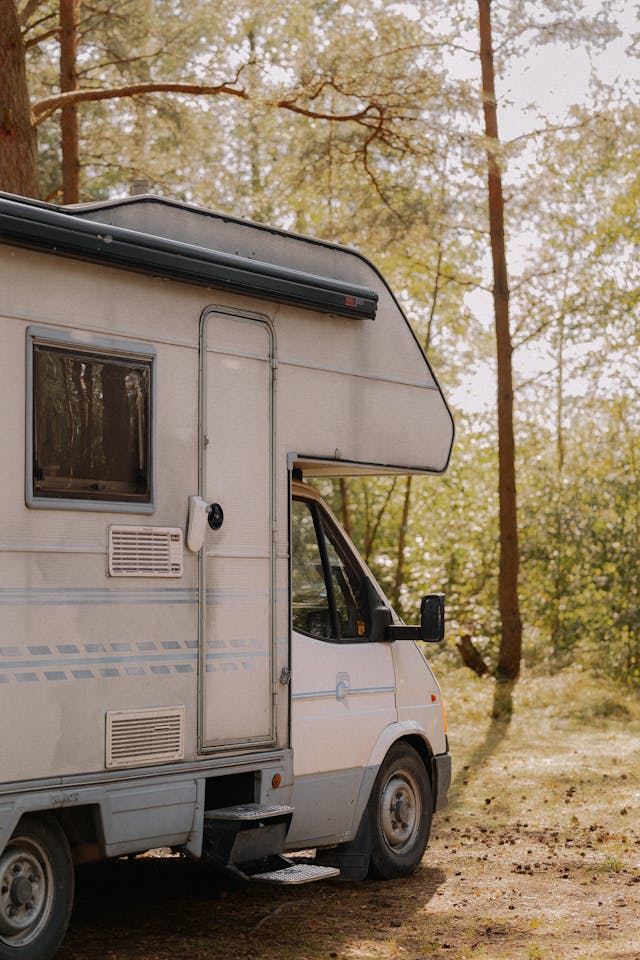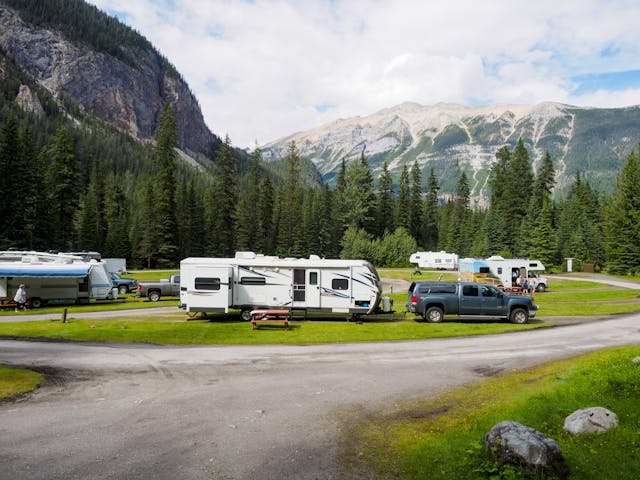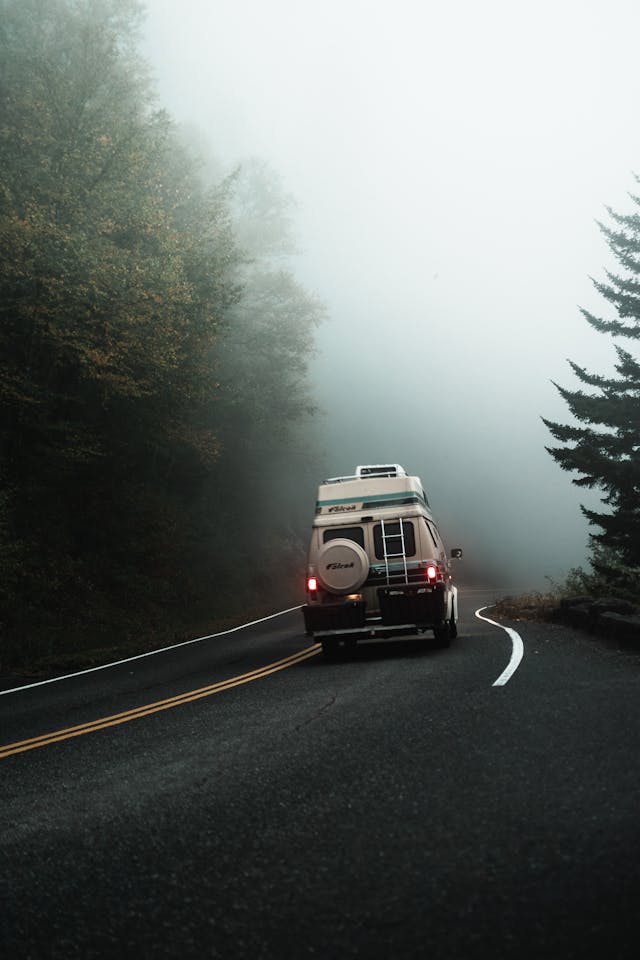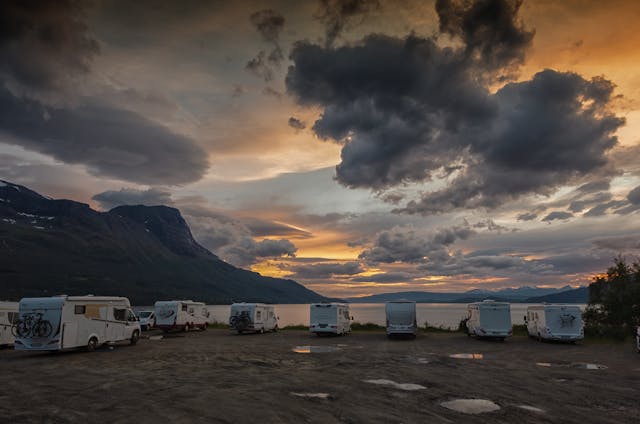With much of the U.S. bracing for a heatwave, keeping cool in your RV or camper is more important than ever. While warm weather is great for Fourth of July festivities, it’s not so enjoyable when you’re trying to relax inside your RV.
We’ve all experienced that stifling heat when stepping into a car that’s been baking in the sun for hours. Even with the AC blasting, it takes time to cool down. Your RV air conditioner faces the same challenge—working overtime to combat extreme temperatures. When it struggles to keep up, you’re left dealing with sticky days and restless, sweaty nights.
So far this summer, cooler days and sporadic rain may have kept your AC use in check. But as temperatures soar, you might be wondering how to keep your RV comfortable in the long run.
One solution? Adding a second air conditioner.
However, installing an additional unit isn’t as simple as just buying it, plugging it in, and flipping the switch. There are several key factors to consider before making this upgrade. Here’s what you need to know before you start shopping.
1. Factor in More Than Just the AC Unit Cost
Before adding a second air conditioner to your RV, budgeting is key. While the units themselves aren’t excessively expensive, the total cost goes beyond just the price tag of the AC.
Here’s a quick look at some sample prices from a recent search:
- Dometic Duo Therm Brisk Air 2 (13,500 BTUs) – ~$500
- Red Dot On-Road/Off-Road Rooftop AC (12V DC) – ~$1,546
- Atwood Air Command (Non-ducted w/ heat pump) – ~$600
- Dometic Duo-Therm Brisk 2 (15,000 BTUs) – ~$470
- Coleman Rooftop AC (15,000 BTUs) – ~$600
On average, you’re looking at $500 to $600 for a second air conditioning unit.
However, the upfront cost is just the beginning:
- Installation: Unless you’re confident in your electrical skills, you’ll likely need to hire a professional, which can add a few hundred dollars to the total.
- Energy consumption: Running a second AC unit increases power demands, which could mean upgrading your electrical system or investing in a second generator—both costly additions.
Before making your purchase, make sure to factor in installation and ongoing power costs to ensure this upgrade fits within your budget.
2. Brace for a Higher Energy Demand
Air conditioners are among the most power-hungry appliances in your RV. Adding a second unit significantly increases your energy load, so you’ll need to assess whether your electrical system can handle it.
Here’s what you need to know:
- Power Requirements: Most RV air conditioners operate at 15 amps or more, with 30-amp service as the standard. They typically run on 115 to 220 volts and offer around 15,000 BTUs or less.
- Circuit Considerations:
- If you’re running two AC units at the same time, a 30-amp circuit may not suffice—a 50-amp circuit is often required, especially for larger units.
- Older RVs are less likely to support dual ACs on 30 amps. If you’re limited to a 30-amp system, you may need to alternate between units instead of running them simultaneously.
Energy Trade-offs
If both air conditioners are running, other high-energy appliances will need to take a back seat. You may have to limit or stagger the use of:
- Electric water heaters
- Toaster ovens & microwaves
- Hairdryers & space heaters
Energy Management Systems Can Help
Newer RVs often feature energy-efficient appliances and built-in energy management systems (EMS). These systems track:
- Air conditioner energy usage
- Battery levels & charger output
- Power faults & inverter status
An EMS control panel can warn you when power consumption is getting too high, helping you prevent overloads and costly electrical issues.
3. Ducted vs. Non-Ducted ACs: The Choice May Not Be Yours
When shopping for a second air conditioner, you may notice options labeled ducted and non-ducted. While both have their pros and cons, your RV’s existing setup often dictates which type you can install.
Ducted Air Conditioners
Ducted systems use metal ducts hidden within the ceiling to distribute cool air through vents located throughout the RV. These are common in larger motorhomes and fifth wheels since they provide even cooling and better humidity control.
Non-Ducted Air Conditioners
Non-ducted units, on the other hand, don’t rely on built-in ductwork. Instead, they use blowers (boxlike air distribution systems) that are mounted on the ceiling or walls to push cool air directly into the living space. These are more common in smaller trailers and RVs because they’re easier to install and don’t require an existing duct system.
Humidity Considerations
If your RV has a non-ducted system, humidity control is crucial. Ducted ACs naturally help manage moisture, but non-ducted units don’t. Without proper ventilation, excess humidity can create an ideal environment for mold and mildew—especially in bathrooms and kitchens. To combat this:
- Regularly clean and maintain vents
- Use dehumidifiers if necessary
- Ensure proper airflow throughout your RV
Before purchasing a second air conditioner, check your RV’s existing system. If your RV already has ducts, you’ll likely need a ducted unit. If not, a non-ducted AC may be your only option.
4. Choosing the Right Location for Your Second Air Conditioner
Once you’ve accounted for cost and energy needs, the next step is deciding where to install your second AC unit.
Best Placement Options
Many RVers choose to install the second AC in the bedroom or main living area, often utilizing an existing vent. However, avoid removing a kitchen or bathroom vent, as these are essential for humidity control. Without proper ventilation, these spaces can become breeding grounds for mold and mildew.
Another common option is mounting the unit on the roof—but this only works if your first AC unit isn’t already there. Why?
- Wiring limitations: Most RVs aren’t pre-wired for dual roof-mounted ACs.
- Weight distribution: Placing both units on the roof can affect the RV’s balance and stability.
The Smartest Installation Spot
For the easiest and most cost-effective installation, follow the wiring. If your RV has pre-wired connections in the ceiling, using an existing spare vent in the bedroom or living area is the best option. This minimizes rewiring, reduces installation costs, and ensures efficient cooling.
5. Balancing the Extra Weight of a Second Air Conditioner
Installing a second air conditioner means adding 40 to 120 pounds of weight—double that when factoring in both units. On the heavier end, that’s almost the equivalent of an extra adult passenger.
Why Proper Weight Distribution Matters
- Prevents trailer sway: If you’re towing a travel trailer, uneven weight distribution can cause dangerous swaying, making it difficult to control.
- Protects axles: Placing too much weight at either the front or rear can strain the axles, leading to expensive repairs.
- Ensures safe handling: A poorly balanced RV can feel unstable, especially at highway speeds.
Check Your Vehicle’s Weight Limits
Before hitting the road, weigh your RV or trailer with everything onboard, including:
- Both air conditioners
- Passengers
- Camping gear and equipment
- Fluids (water, propane, fuel, etc.)
Compare this weight to your Gross Vehicle Weight Rating (GVWR)—the maximum your RV can safely handle. If you’re towing, also check the Gross Combined Vehicle Weight Rating (GCVWR), which includes the trailer and tow vehicle. Never exceed these limits.
For trailers, the tongue weight is another key factor. This is the downward force on the trailer hitch, which should be 9% to 15% of the Gross Trailer Weight. Proper tongue weight helps prevent jackknifing and trailer sway, keeping your ride safe and smooth.
6. Keep a Close Eye on Your RV Battery
Your RV or trailer battery functions much like a smartphone battery—the more you use power-intensive appliances, the faster it drains. Just as gaming apps and GPS zap your phone’s charge, heavy-duty appliances in your RV—such as microwaves, hairdryers, and air conditioners—consume a significant amount of energy.
Understanding Your RV’s Battery System
- Most RVs have a battery bank consisting of at least two batteries.
- A 12-volt system is standard for running essentials like lights, water pumps, TVs, and chargers.
- A 120-volt system may be necessary for handling larger power loads (such as dual AC units).
How a Second AC Impacts Your Battery Life
- Running one AC already drains power quickly—a second unit doubles the demand.
- Without proper energy management, you may deplete your battery faster than expected.
To avoid unexpected power loss, be diligent about monitoring battery levels—especially if you’re boondocking or camping off-grid. Consider solar panels or a generator as backup power sources to keep your ACs running smoothly.
7. Shore Power Considerations and Alternative Solutions
If you’re staying at a campground or RV park, powering your air conditioners requires careful planning. Most RVers use a 30-amp plug for shore power, but with two AC units, you’ll likely need a 50-amp hookup.
Understanding Shore Power Limits
- Many campgrounds cap power usage—often at 3,600 watts or less, meaning you may only have enough power for one AC at a time.
- Drawing too much power could trip breakers or reduce electricity availability for fellow campers.
- If your site doesn’t offer enough shore power, you might need to supplement with a generator.
Using a Generator: Pros and Cons
- Provides backup power when shore power isn’t enough.
- Ensures both AC units run without overloading campground power.
- Generators can be noisy, emitting vibrations and fumes that may disturb nearby campers.
- Some parks have restrictions on generator use, especially overnight.
Other Power-Saving Strategies
If you’re relying on shore power alone, you may need to reduce energy usage elsewhere by:
- Unplugging the microwave, electric water heater, refrigerator, and other high-energy appliances.
- Using propane alternatives for cooking and heating water.
- Investing in an energy management system to monitor and balance power usage efficiently.
While managing shore power takes some planning, ensuring cool and comfortable RV living is worth the effort!
